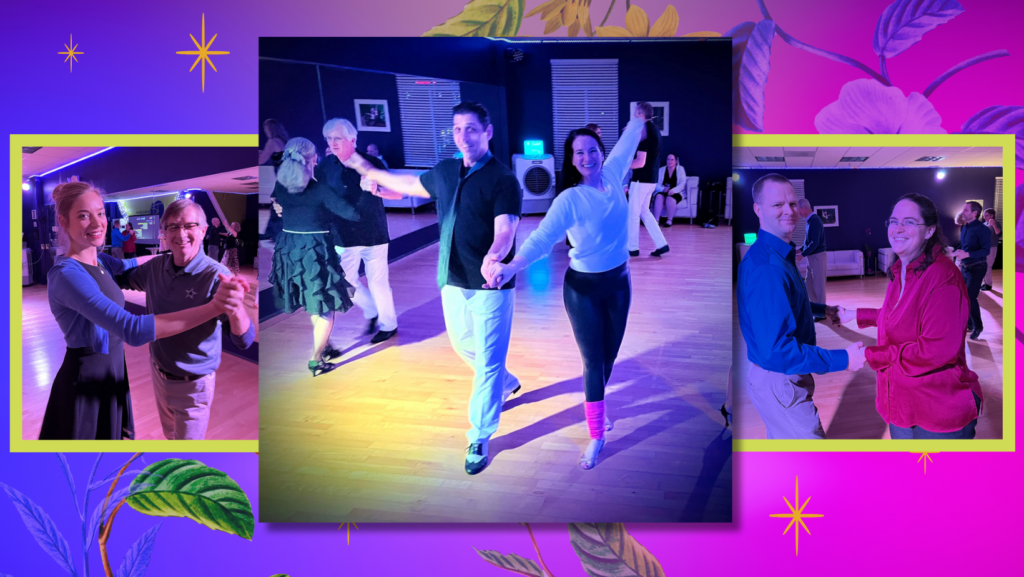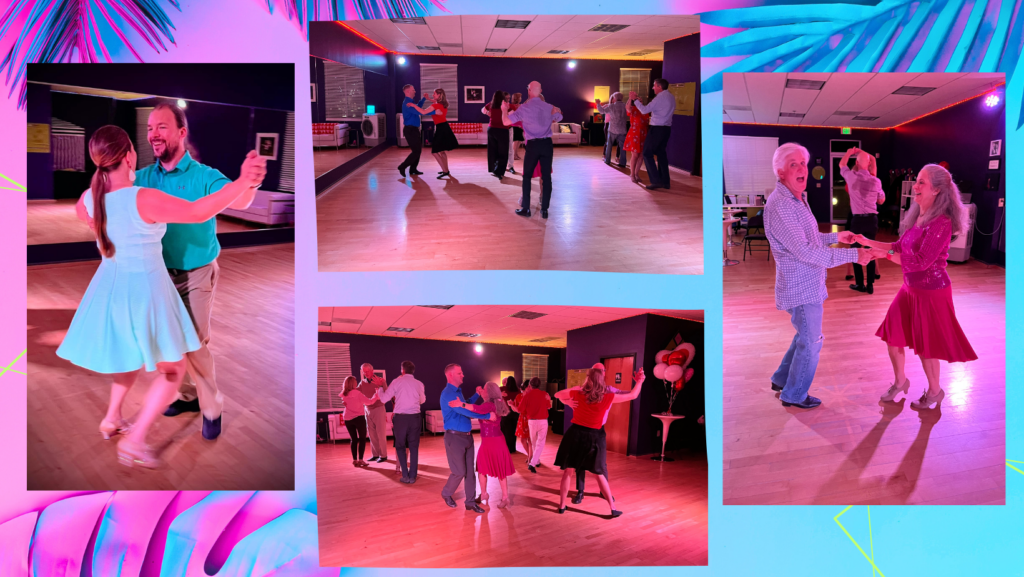Top 10 Social Dance Tips for Leaders ??

I had the great joy to venture out social dancing recently and I had some life changing dances and some unpleasant experiences. What makes the difference?
I think we all want to not only enjoy ourselves while dancing, but to be a good partner and to make the dance enjoyable for that person. We’d love to be that sought after dancer that makes their partner swoon with happiness 🙂
What are the things that we can do as leaders to be exceptional social dancers and to make the dance fun and memorable for our follower?
You don’t have to be an advanced dancer, have years of experience, or know tons of moves to do these 10 things.
Top 10 Social Dance Tips for Leaders ??
The good ?
#10 Test the waters.
The best dancers evaluate their partner before taking a single step. In this way, they can choose the steps that are most suited for their follower’s ability. It’s not about doing every single move you know or showing off your most advanced combinations. From the very first step to the last note, you want your partner to feel successful and taken care of.
How to evaluate your follower? Take hold – often you can tell the skill level of your partner just through their frame and connection. Then, do a few weight changes, side hesitations, or isolations to see how their body responds. This will tell you the level and types of moves you can dance well together so you can curate a dance for her enjoy.
#9 Dance to your partner’s ability.
Start with basic steps and if appropriate, progress to more intricate patterns. If they struggle with more advanced moves, take it down a level. The dance should feel effortless and comfortable for your partner. If you choose moves that allow them to feel successful, they will enjoy dancing with you.
#8 Make a connection.
Asking for the dance – this sets the tone. If someone asks you to dance and you smile widely and say “Yes, I’d love to!” they will feel relaxed, confident, and ready to dance their best.
During the dance – enjoy your time together. Make eye contact (if appropriate), smile or have a pleasant expression. This helps your partner feel at ease so you can have a more enjoyable dance together.
After the dance – you can simply say thank you, share a hug, and/or give them a compliment. Specific compliments are great: “You’re such a smooth follower; it was so effortless to dance with you.” or “Wow, you dance those double turns so nicely.” People will remember these comments and they will treasure their time on the dance floor with you.

The bad ?
#7 Don’t ignore your partner while dancing.
If you look bored or miserable, or are looking around the room instead of at your partner – they will have a bad experience. Better not to dance than to give a partner this experience.
#6 Don’t try moves you don’t remember. And certainly don’t try them over and over if they’re not working.
This sounds rather obvious, but you wouldn’t believe the number of times this happens. It goes something like this:
Leader: “I’m going to try this new move. I just learned it.”
Follower: Thinks “oh no, here we go…”
Leader: “I don’t remember how it starts; I think it goes something like this”
Follower: Smiles wanly as leader flails like a fish out of water
Leader: “And you’re supposed to go here, or is it that way?”
Follower: Begins looking for escape route
Leader: “Mmm that wasn’t right. Let me try that again”
Follower: Stares ahead blankly willing themself to endure the next two minutes
While you certainly don’t need to be perfect to lead a new step socially, you should only lead steps that you can comfortably and confidently execute. Hope is not a strategy. Your classes, lessons, and practice sessions are the appropriate times to work through new moves and get them in your muscle memory so you can lead them smoothly on the social dance floor.
If you try a step and it doesn’t work, either:
1. You didn’t lead it well (and so you should practice more before attempting again) and/or
2. Your partner isn’t experienced enough to follow this step (and you should downshift to steps they can more easily follow).
You may try the move just one more time if you have reason to believe it will work on the second try, but after that, choose other steps that will be more successful and enjoyable for both of you.
#5 No verbal leads
Social dancing is lead/follow based. If you find that you cannot lead your partner with your body either:
1. You are not leading clearly and/or
2. They do not have the knowledge or ability to follow this step. In either case, it’s best to try something else – preferably a simpler pattern that you can succeed in dancing together.
It’s not ok to coach your partner through a move – sounds like “now you turn here” and definitely not ok to scream instructions to your partner “duck!” or “spin twice!”. When leaders resort to verbal leads they are trying to force a situation. It’s unpleasant and unnecessary.
The ugly ?
#4 Don’t correct your partner.
When a partner agrees to social dance with you, they are not consenting to be your pupil. Therefore it is not appropriate to offer unsolicited corrections, tips, or “help” to a dance partner. My best advice is to accept each person as they are in that moment, trusting them to learn and grow along their unique path.
#3 Don’t grab your partner and hold them in a viselike grip.
Always make space for your partner’s body, even in the closest of connections – sensual Bachata, American Tango, etc. Many leaders don’t realize the importance of holding your arms in front of your body when dancing in body contact. Inviting a partner to dance close is fine, but pressing them to you is uncomfortable, restricts their ability to move, and pulls them off balance. Be sensitive to your follower’s comfort level and preferences when dancing closely.
#2 Dips & Tricks
I’m a rather fearless follow. I’ve been flipped upside down by a strangers at a club, lifted in the air by dancers I’ve never met. With a confident lead for a trick or dip, one cannot help but follow.
When a lead isn’t clear or correct, I’m not going off balance – no thank you. Hence the shakily attempted dip followed by the leader saying “Don’t worry, I got you”. If leaders try a dip or trick and need to say “I got you” this means (to me) – they don’t have you; they’re merely saying “if you fall I promise to catch you.”
This is very different from a secure lead in which the Leader’s body itself says “I have you so perfectly secure and my body weight is counterbalanced in such a way that falling is not possible”. And I will follow that lead.
So don’t force your follower to do dips or tricks. If they don’t follow there is a reason. They may not be comfortable, have an injury, or you may not be leading perfectly. Either way, move on to something else. At the end of the day social dancing is a conversation – with an invitation and a response. Sometimes the response is no and that’s ok 🙂
#1 Social Dance Tip for Leaders ??
Who better to share our #1 top dance tip than one of America’s most iconic leading men Patrick Swayze.